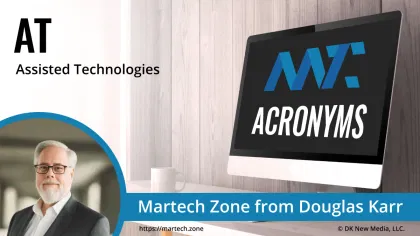
Refers to the broad category of tools, devices, systems, and software designed to improve the functional capabilities of individuals with disabilities, impairments, or age-related limitations. The primary goal of AT is to enhance independence, inclusion, communication, mobility, and quality of life. While many associate assistive technology with physical devices such as wheelchairs or hearing aids, the scope of AT has expanded dramatically with the rise of digital interfaces, AI, and smart environments.
Defining Assisted Technologies
Assisted Technologies encompass both low-tech and high-tech solutions:
- Low-tech examples include pencil grips, communication boards, magnifying glasses, and non-digital aids that require little to no electronic components.
- High-tech examples include speech-generating devices, eye-tracking software, screen readers, robotic limbs, and AI-powered personal assistants that can adapt to user behavior.
These technologies are applied across multiple domains—education, employment, healthcare, transportation, and personal life—supporting people with visual, auditory, motor, cognitive, or speech impairments.
Categories of Assisted Technologies
- Mobility Aids: Wheelchairs (manual and powered), prosthetics, exoskeletons, and stair lifts assist individuals in moving safely and independently.
- Communication Aids (AAC – Augmentative and Alternative Communication): Text-to-speech devices, symbol-based apps, or voice banking systems support those who cannot rely on verbal speech.
- Vision Assistance: Screen readers, Braille displays, magnification software, and OCR (optical character recognition) tools help individuals with visual impairments access information.
- Hearing Assistance: Hearing aids, cochlear implants, induction loop systems, and real-time transcription software support auditory access.
- Cognitive Support Tools: Calendar apps with reminders, task management systems, predictive text tools, and AI companions help users with memory, processing, or learning difficulties.
- Environmental Control Systems: Smart home tech (lights, thermostats, locks) integrated with voice assistants or adaptive switches enables control of surroundings without physical exertion.
- Educational AT: Specialized learning platforms, speech-to-text tools, accessible e-books, and reading comprehension software enable equitable access to education.
Trends in Assisted Technologies
Modern AT is increasingly leveraging artificial intelligence, machine learning, and data analytics to offer more personalized, adaptive experiences. Key innovations include:
- AI-powered voice assistants that understand speech variations and context for more effective interaction.
- Brain-computer interfaces (BCIs) enabling direct communication between a user’s brain and external devices.
- Wearable assistive tech, including smart glasses for navigation, or haptic feedback systems for sensory substitution.
- Integration with mainstream platforms, where operating systems like iOS and Android offer built-in accessibility features, reducing the need for third-party solutions.
Importance of Universal Design and Accessibility Standards
While AT addresses specific individual needs, it plays a key role in the broader movement toward universal design, creating products and environments inherently accessible to all users. Compliance with standards like the Web Content Accessibility Guidelines (WCAG) and legislation such as the Americans with Disabilities Act (ADA) or Section 508 of the Rehabilitation Act ensures public institutions and businesses are held accountable for accessibility.
Challenges and Considerations
Despite technological advances, the deployment of assisted technologies still faces several challenges:
- Cost and funding: High-tech AT can be expensive, and insurance coverage or public funding is often inconsistent.
- Training and support: Proper use often requires extensive onboarding, ongoing training, and technical support.
- Customization: Individual needs vary widely, and solutions must be adaptable to user preferences and conditions.
- Stigma and adoption: Social attitudes and design aesthetics can influence whether individuals are willing to adopt or consistently use AT solutions.
The Future of Assisted Technologies
As inclusive design becomes more embedded in product development and AI capabilities mature, assisted technologies will continue evolving toward greater autonomy, contextual awareness, and seamless integration into everyday life. Innovations in natural language processing, gesture recognition, and ambient intelligence will likely shape the next generation of AT, making technology not just assistive but truly empowering.